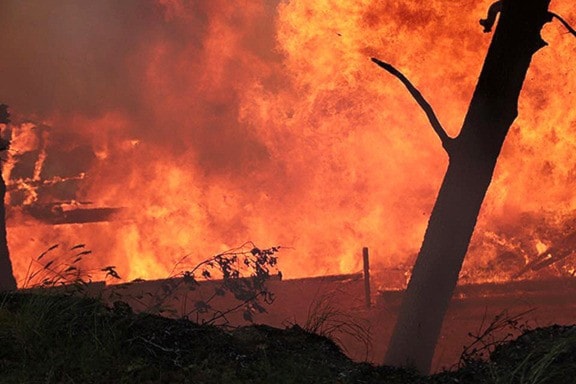“It was simply painful to watch the efforts of the firemen at this stage of the fire.” —Nanaimo Free Press.
Fire. For all of our magnificent technology, it’s still with us. But it was worse back then. In fact, fire was the single greatest threat to communities built primarily of wood and heated by open flame — with little in the way of firefighting capability or adequate waterworks.
This became painfully evident when flames swept through Nanaimo’s St. Ann’s Convent, early on the morning of July 11, 1910. Hours later, little more than a “smoking, steaming pile of charred and blackened ruins” remained after what was described as one of the most pathetic, as well as disastrous, blazes in the Hub City’s history.
Making it all the worse was the fact that it should never have amounted to more than a minor conflagration, although it had to be acknowledged that residents were lucky that much of the town didn’t go up in smoke as well.
The real villain wasn’t the initial blaze, which broke out in the convent’s detached laundry, but the lack of adequate water pressure. After the alarm was turned in at 5:30 a.m., firefighters concentrated on saving the main building which they initially thought to be in no real danger. But luck wasn’t with them this day. Dry weather and salvaged lumber piled beside the laundry combined to feed the flames’ fury.
Worse, when firefigthters opened their hose nozzles — no water. This, despite the fact that there was a hydrant immediately at hand, and a second just a block away. “...From neither one of them was there any reasonable or adequate supply of water,” reported the Free Press. “It was simply painful to watch the efforts of the firemen at this stage of the fire.”
One hose was played, pitifully, on the convent to wet it down while a second, manned by firemen Billy Edmunds and Harry Freeman, did its best to dampen the roof of the kitchen. But the water pressure was so slight that they had to use their thumbs to make the water spray!
The disgusted newspaper declared neither hose to be “as good as a garden sprinkler with fair pressure”. In just half an hour it was seen that the fire could not be stopped from spreading to the convent and the adjoining church.
An army of men and boys rushed to evacuate the convent’s furniture and fittings; more could have been saved but when the middle tower began to “fume and smoke like a belching steamer funnel,” they turned their attention to the church. “Nothing could be done to abate the flames in the laundry, and in spite of all their heroic efforts, the firemen couldn’t stop the smouldering [adjacent roofs] from breaking into flames.”
Firefighters, “watched by hundreds of pairs of eyes, waged a grim and desperate fight with the flames... It was all no use.
All the risks they took, all the blistering heat they suffered and the suffocating smoke they swallowed went for naught. There was no water, no pressure. Sometimes it merely flickered from the nozzle, others times it did little more than drip. Never at any time during those precious hours between 5:30 and 7:30 was there pressure enough to carry the water 5 or 10 feet. With both hoses playing together, the exhibition of water play was pitiable.”
Firemen couldn’t be faulted for want of trying; in fact, in the eyes of a reporter, they took unjustifiable risks as there were no lives at stake. “So far as the men on the nozzle are concerned they did everything that was humanly possible to save the building.”
For a short time, with a hose pumping from a hydrant at Selby and Fitzwilliam streets and the fire engine drawing from the hydrant at Wentworth and Wallace, firefighters were able to achieve a water stream of 15-20 feet. But it was too late. Some later argued that firemen had made a tactical error in continuing to hose down the convent instead of concentrating on the church. Before they could reposition themselves to do so, its roof, too, became a mass of wind-whipped flames that began to carry sparks and burning shingles over the community. Neighbours evacuated their homes after gathering up what valuables they could, tore down wooden fences and dragged anything flammable out of harm’s way.
Fortunately — miraculously — the inferno confined itself to its immediate victims. Initial estimates placed total damage at $23,000 (a much greater sum then). Ironically, the problem of inadequate water pressure was determined to be not the lack of water, but the fact that the entire city had been drawing from a single six-inch pipe.
